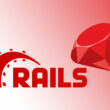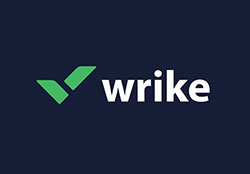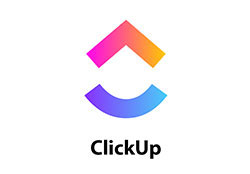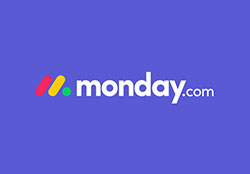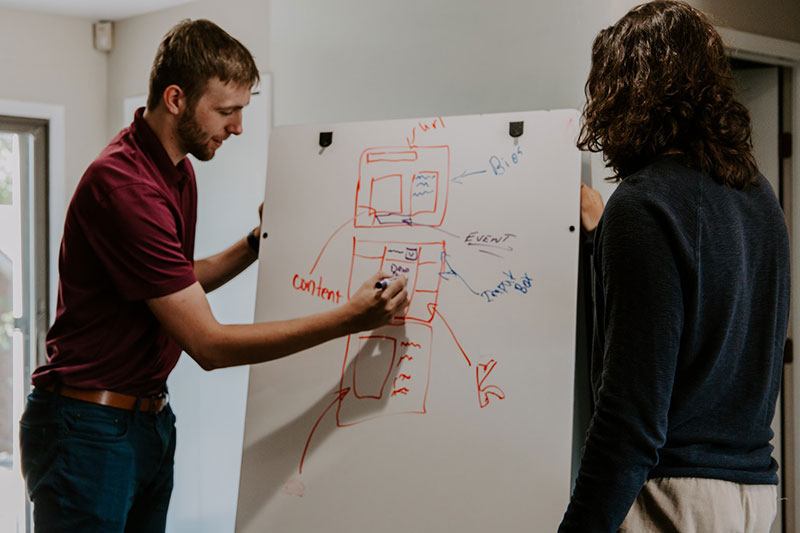PMMs, short for project management methodologies, represent the beginning of the project management process. The project manager must select the appropriate PMM to meet the goals of the startup. Methodologies affect every single aspect of how tasks are handled and how a business develops in time.
There are several PMMs one can choose from, and companies began to select more than one methodology, coming up with a hybrid way of handling project management. To define methodology, it is a system of procedures that, used together, solve problems that are detected within the scope of a certain topic, for instance, business. Methodologies are sets of practices that can be applied in different fields.
In business, project management methodologies have different purposes that align with the company’s goals. Some methodologies are suitable for quick growth, while others focus on comprehensiveness. Selecting the appropriate one can be done only by assessing the needs of the team members, the project type and its scope.
In the same fashion, TMS starts each development project with an assessment of the businesses’ requirements in order to create a clear and relevant development plan.
Key takeaways
- Methodology Selection Based on Project Needs: The project’s requirements, such as outcome, budget, timeline, and complexity, should guide the choice of methodology. A structured approach like Waterfall is suitable for well-defined projects, while Agile is preferable for projects with uncertain and evolving requirements
Consideration of Team and Company Dynamics: The chosen methodology should match the team’s experience, training, and adaptability. Larger companies may need methodologies that fit established hierarchies, whereas smaller companies may benefit from more flexible approaches
Customer Involvement: The degree of customer involvement also dictates the choice of methodology. Agile is recommended when customers are deeply involved in the project, as it allows for continuous feedback and iteration
Benefits of a Project Management Methodology: Employing a project management methodology enhances project outcomes by improving efficiency, risk management, communication, and cooperation within the team, leading to successful project delivery that aligns with stakeholder expectations
What methodologies you should know about?
After understanding the methodology definition, you should get informed about the most popular methodologies out there. Here are the ones selected the most:
Waterfall
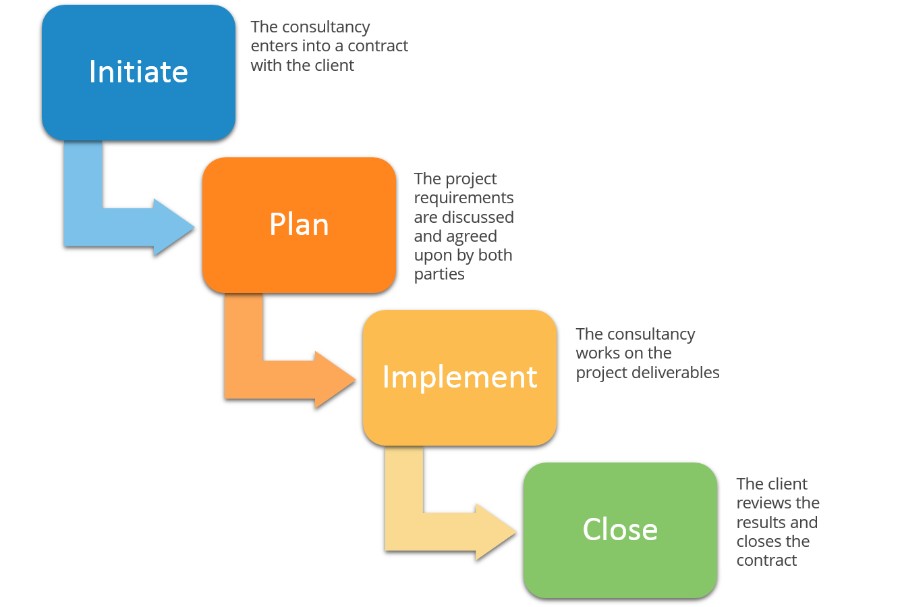
The Waterfall methodology is a traditional one. It involves a linear approach, which means that all processes are headed in one single direction. This is where the name of the approach comes from. This methodology was firstly used in the industry of manufacturing. Because of its characteristics, it made it easy to structure processes. Initially, the Waterfall method was not as flexible as it is today.
The methodology is suitable for heavy demands. When the requirements are difficult and numerous, the Waterfall methodology should be suitable for the project. Proceeding to use a methodology must be done carefully, as the project can’t be corrected while the process starts. The Waterfall methodology doesn’t give the user the possibility to return to a previous task. In order to reach success while using the Waterfall methodology, each task should contain defined steps, arranged both logically and chronologically.
The methodology has distinct stages. The first one refers to collecting data. By data, the Waterfall methodology refers to requirements and solution approaches that are preferred for that specific project. If issues appear along the way, the selected solutions must be implemented. After collecting the requirements, the process continues with analyzing it. Once analyzed, the designing stage can begin, which leads to coding and eventually testing. The last stage is represented by running operations.
The main benefit of the Waterfall methodology is that each and every step along the way is assessed before, and the needed details are preplanned. This leaves no room for mistakes. The major downside of it is its lack of scalability. If a customer needs to make a change, the entire sequence of the task in a Waterfall methodology will be altered. Managing the sequence afterward will be very difficult to impossible, which means a new methodology must be applied.
As a project management methodology, Waterfall is efficient only in cases where documentation is done beforehand. Any information provided is helpful to run the task smoothly. During the development process, documentation is paramount, and it will affect how processes run later.
What advantages the methodology has?
Waterfall is one of the project management methodologies that should be listed. There’s no need to have a lot of knowledge in the field of project management to work with Waterfall. It is an intuitive methodology that offers the needed efficiency regardless of the experience of the user.
The Waterfall methodology is also very structured, which means it doesn’t offer much flexibility. This can be perceived as an advantage because the separation between the process stages can help users divide work rapidly and without error. Because of its rigidity, users must pay careful attention to each stage and this automatically leads to a better result.
The fact that Waterfall requires so much documentation beforehand is also a benefit, as the gathered resources help users understand the project in-depth. Again, depending on the project’s characteristics, this can be both an advantage and a disadvantage.
What disadvantages the methodology has?
Rigidity, from a negative point of view, puts the project at risk. If any mistake is made during one stage, the method needs to start over from scratch. This would imply a lot of resources, ranging from time to money.
In addition, the person who works with Waterfall must analyze all documentation related to the requirements of the project. If the documentation is not done the proper way or if it changes along the way, the project fails. Long projects can be difficult to manage using Waterfall because it is a front-heavy methodology.
Who should choose this methodology?
The Waterfall methodology stages are a match for large projects that already have clearly delimited stages and proper documentation. Projects that work with timelines can make good use of Waterfall as well.
Agile
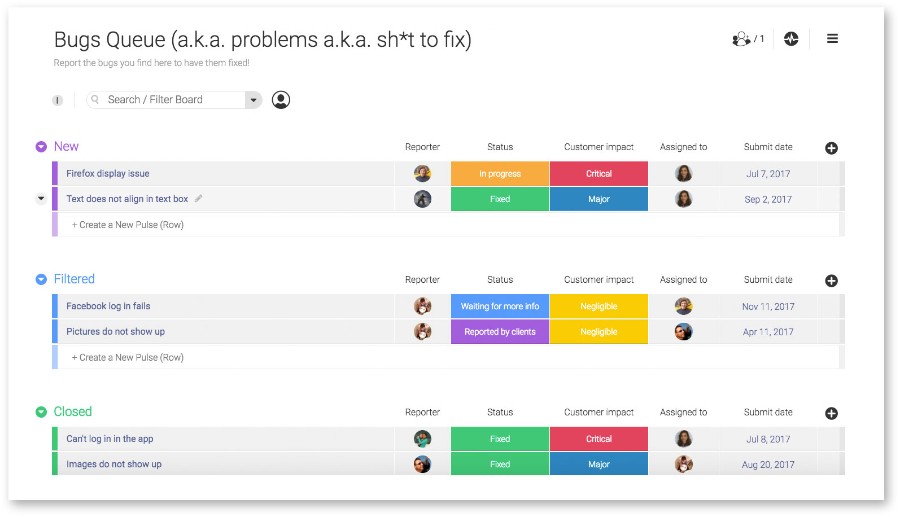
Agile is similar to Waterfall from some points of view. It is focused on software development as well, and it actually emerged in order to fix the issues that people encountered with Waterfall. Agile can be used with projects that are more complex.
This methodology is meant to fill in the gaps that Waterfall has, which makes it more accessible. It has a scalable structure, in comparison to Waterfall, and it is based on values and principles. Agile is more iterative, focusing on collaboration and recognition.
The values that Agile promotes include: processes and tools should occupy the second place, as individuals and interactions hold the main role in development; documentation is no longer a priority because software takes its place; negotiation is not required anymore because Agile promotes collaboration between customers; following a strict plan is not a necessity because Agile can respond to sudden changes.
The principles that Agile promotes include: delivering software continuously to gain customer satisfaction in early stages; accepting changes that may come up along the way and accommodating to them rapidly; delivering working software as often as possible; encouraging the collaboration between customers and developers during the development phase; motivating the team members during the process; measuring progress only through working software; supporting a consistent development pace; enhancing the importance of detail; keeping things simple; encouraging teams to be self-organized in terms of architectures and designs; encouraging effectiveness among the team members.
Are you looking for a great project management app?
Here are our recommendations:
What advantages the methodology has?
Compared to Waterfall, Agile offers the needed flexibility that developers desire from project management methodologies. The development stages are no longer fixed, and documentation is not essential. Experimenting and making incremental changes are possible through Agile, while also being able to make changes along the way.
Because of the freedom it offers, Agile is almost risk-free. Customers can constantly give their opinion and feedback on the project’s status and developers can make the required changes. Project failure is reduced to a minimum.
What disadvantages the methodology has?
The freedom of this methodology can also be harmful. Developers don’t have any plan to begin with, which may lead to confusion. Resource management or timelines are going to be affected by this feature, but this happens because Agile can support sudden changes. Resources may be used recklessly at times.
No planning involves having all people connected during the entire period of the project. Every department must be up to date to any move, including the customers. Agile is focused on receiving feedback and making the needed changes, so customers have to be available to provide it. In the case of Waterfall, this wasn’t needed.
Who should choose this methodology?
Agile is an adaptive methodology, great for complex and creative projects. If a project is most likely to suffer changes in the future, Agile is the right choice.
Plus, it encourages collaboration and constant improvement, so the failure of the project is very unlikely. Uncertain projects that are not well-contoured yet can choose Agile without second thoughts.
Critical Path Method (CPM)
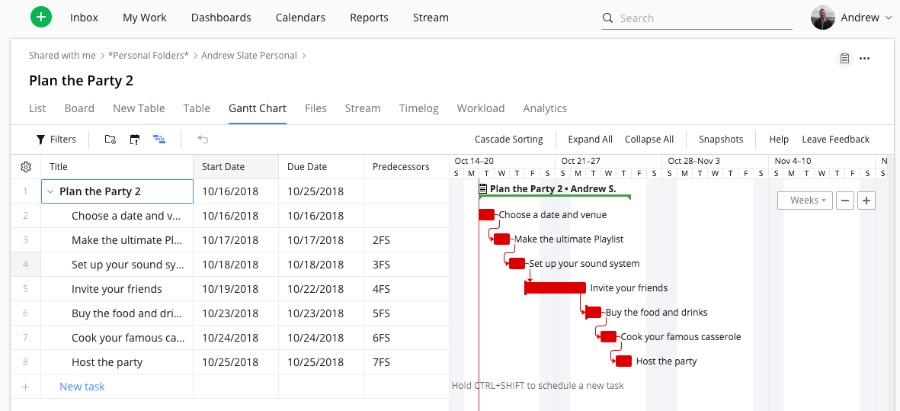
Critical Path Method, also known as CPM, is a methodology that focuses on resources. More exactly, CPM helps developers work with the interdependency of resources. The methodology involves sorting tasks in a project based on dependency and timeline.
To make it even simpler, CPM uses timeframes in order to prioritize tasks. For instance, if a software update must be published, CPM can focus on one task only, even though it is dependent on others. Through CPM, developers gain visibility on paths (critical and non-critical dependencies) between time and activity.
Developers can use CPM to establish relationships between tasks that are dependent on each other. Thus, CPM forms strings of tasks that further create sequential items that define the entire project’s path. The team can plan their timelines so that no time is wasted during the development process. The major benefit of CPM comes from prioritizing tasks and establishing paths based on dependency because all unpleasant situations are thus avoided.
Resources can be properly managed using project management methodologies such as CPM. Managers can move employees from one task to another if required. This means that the chain of events can be altered according to the project changes. Non-essential tasks can be postponed while the ones that are marked as prioritized will be in focus.
What advantages the methodology has?
First of all, it allows managers to schedule all the tasks better. The mapping of all the events and activities is done based on the completion duration rather than other factors. Dependent tasks can be scheduled accordingly, through the use of a CRM program. It is much easier to identify the processes and schedule them this way.
Secondly, the fact that this methodology offers the possibility to prioritize some tasks and postpone others give managers the freedom to make changes in the timeline whenever they are required. Mapping activities based on how critical they are for finishing the project means that managers can spend resources more wisely.
What disadvantages the methodology has?
The main downside of the methodology is that it can’t be used without proper experience. Project managers need to know how to schedule the tasks based on their level of difficulty and their role in finalizing the project. If the managers don’t know how to prioritize the tasks, the methodology might end up being useless.
CPM has a similar disadvantage when comparing it to Waterfall – it is front-heavy. This means that planning beforehand is still necessary. Even though the timeline of tasks can modify, no drastic changes can be made if they alter the schedule.
Hybrid

A combination of the previously listed methodologies would create the ideal one. Luckily, there is an approach that combines the features of Waterfall and Agile. It is called the Hybrid approach and it takes what’s best from the two methodologies. Thus, a Hybrid approach is both flexible and structured, making it perfect for a variety of projects. By combining the most important features of Waterfall and Agile, the Hybrid methodology, also known as Structured Agile, has the perfect attributes for projects that need rapid iterations.
What advantages the methodology has?
Flexible: the Hybrid method is highly flexible, which means it can be used with projects in which changes may occur along the way, without ruining the rest of the processes. Of course, the requirements can’t change entirely, but Hybrid supports small requirements.
Structured: the Hybrid method borrows the planning stage mentioned above in the case of Waterfall. Through this stage, the structure that was missing from Agile is regained, thus making the Hybrid methodology great for most projects. It basically takes the greatest characteristics of both methodologies and combines it into a greater one.
What disadvantages the methodology has?
In some cases, managers have to compromise when using the Hybrid approach. Because it combines the features of two distinct, entirely opposite approaches, the efficiency of the methodology can lack quality in some areas.
The flexibility obtained through the Hybrid approach is not the same as the one obtained with Agile. Again, the risk-free option that Waterfall offers is not available when choosing Hybrid as constraints may appear along the way.
Integrated Project Management (IPM)
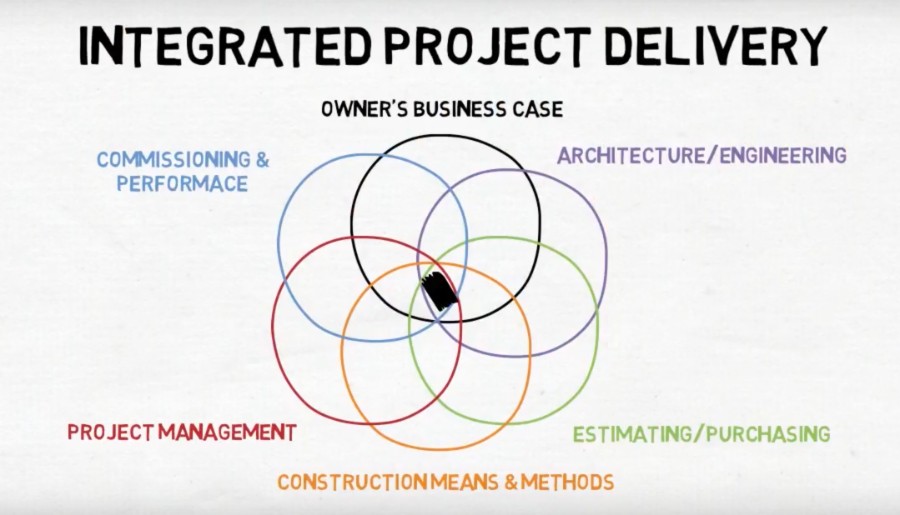
IPM, which means Integrated Project Management or Integrated Project Delivery, is another methodology used in project management that brings something new to the table – encouraging creativity. IPM is mostly selected by companies that work in creative industries because it encourages shared processes among an organization.
The IPM approach works as an integrated entity, as seen in integrated-nature creative campaigns. This means that the tasks no longer include just completing a task but integrating it with other things as well. For instance, in marketing companies, an ad can be produced and then integrated with the website or digital content. This is the simplest, most effective example of IPM results.
What advantages the methodology has?
It is a highly transparent method, which means that team members stay up to date with all the information attributed to the project. IPM requires often meeting so that the team members can communicate their ideas and feedback. By staying in the loop and maintaining transparency, the project has a positive outcome in most of the times.
Another great advantage of IPM over all project management methodologies is that it is fully integrated, which means that the whole team is responsible for any mistake or error that occurs during the project. Accountability is taken by the entire team, thus encouraging productivity. IPM is suitable for projects that have larger teams.
What disadvantages the methodology has?
IPM is equal to lots and lots of planning. Without planning, this methodology has a chance to fail. You need to plan all details upfront and integrate all the processes that are going to be included in the project. This means that the IPM methodology takes a while to align with the requirements of the project and involves some effort.
It is only suitable for larger agencies because the teams must be numerous enough to benefit from transparency and integration. For creative projects, where often changes and brainstorming are keys for a great outcome, IPM is the right choice.
PRiSM
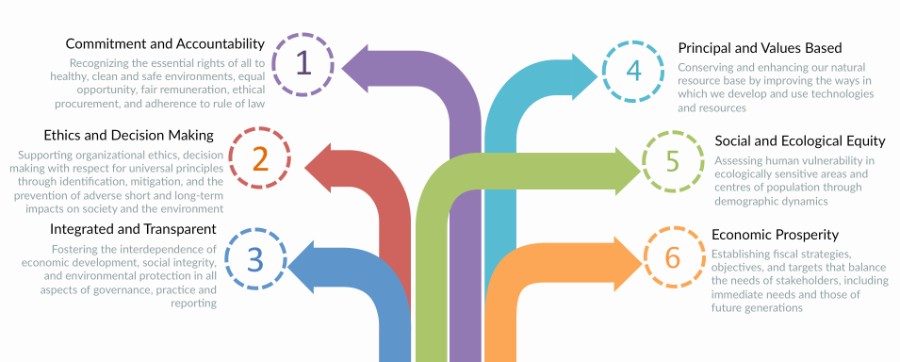
Projects integration Sustainable Methods, shortened as PRiSM is the methodology developed by GPM. It is nothing similar to the traditional methodologies listed here and it is more focused on the long-term development of the project rather than the final outcome. Actually, PRiSM is great for projects that require tracking progress during its entire lifecycle. What’s amazing about PRiSM is that it takes into account the environmental impact that a project has, thus following its progress in time to check whether it remained sustainable or not.
What advantages the methodology has?
It is a perfect methodology for modern projects that need to take into account sustainable approaches for their development. Because sustainability is not in the center of attention for both startups and huge enterprises, there is no wonder why a project management methodology just as PRiSM gained so much popularity. It is a new ideology that is viable for environmental-friendly projects.
What disadvantages the methodology has?
PRiSM won’t work for projects that don’t have anything to do with the environment. Industries such as software development or creative projects don’t have any implications in nature, so they couldn’t make use of PRiSM. Thus, the range of projects that are suitable for PRiSM is quite narrow.
Secondly, reaching success through PRiSM is dependent on every single department involved. From the inside team to outside contractors and customers, everyone must have aligned goals in order to achieve the desired results with the help of PRiSM. Moreover, the main principle of the project must be the sustainability one.
Who should choose this methodology?
PRiSM is great for large enterprises working in constructions, real estate or other industries where sustainability truly is a concert that has to be assessed in today’s world.
PRINCE2
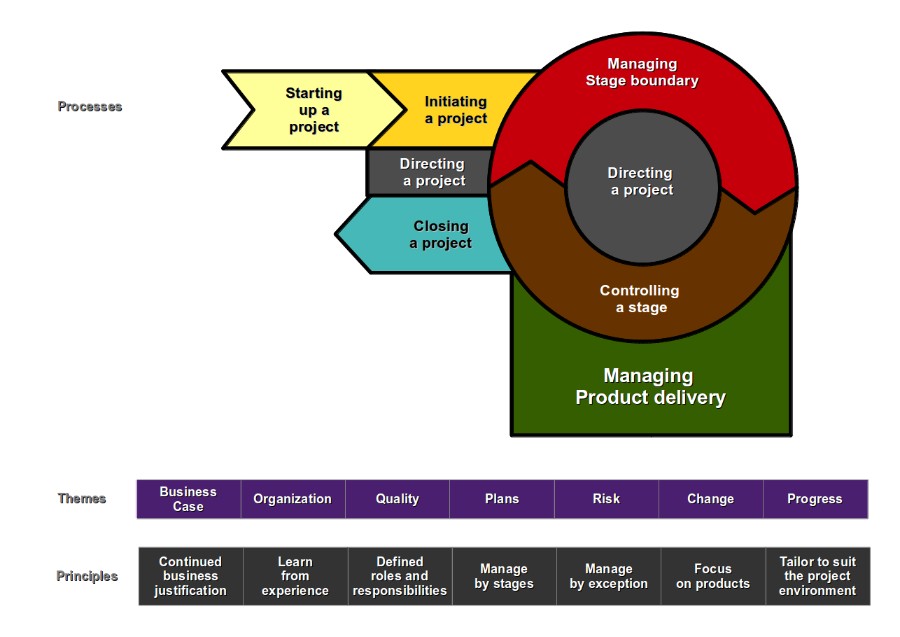
PRINCE2 is a project management methodology used in handling UK governmental projects. PRINCE2 translates as Projects IN Controlled Environment. The methodology promotes a 7-7-7 scheme, where the numbers represent the principles, themes, and processes that make PRINCE2 successful.
The principles include lifelong justification of the business progress, learning from experiences and failures, defining the exact roles and responsibilities of everyone involved, managing the project in stages, taking into account exceptions and priorities, focusing on products and focusing on the project environment. Starting with these few principles, PRINCE2 is meant to manage projects in an efficacious manner.
What advantages the methodology has?
As one of the main principles of this methodology is learning from experience, documentation is a big part of planning how tasks will be handled.
This is why this methodology has a very reduced risk of failure. By paying attention to all details that could affect the outcome, the risks are tremendously reduced, leaving behind a safe methodology often selected by governments.
What disadvantages the methodology has?
The most impactful disadvantage of PRINCE2 is that heavy documentation leaves little to no room for changes. Any change will involve a difficult period of accommodation that can’t be afforded in certain projects. Re-allocating resources and redoing the documentation will also take a lot of time, which can lead to serious delays.
Who should choose this methodology?
This methodology works best with projects that are complex, large and fixed. When the requirements are clear and you know for sure that it won’t suffer any changes, PRINCE2 is the best-suited method. The PRINCE2 methodology is mostly used in government projects because of its risk-free feature.
Six Sigma
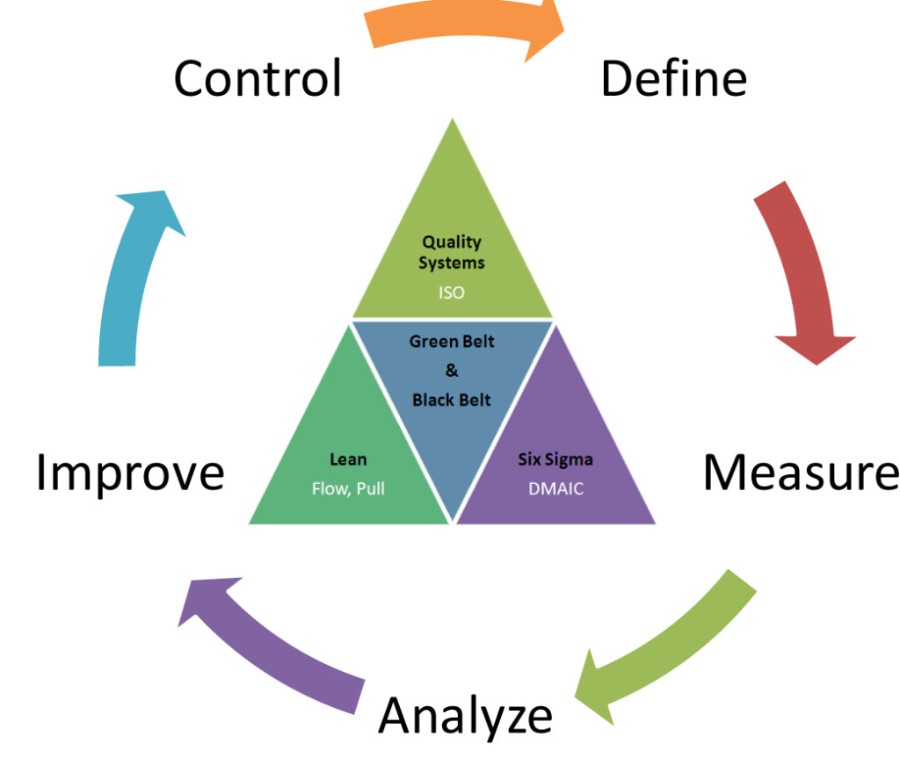
In 1986, the team at Motorola came up with an entirely new methodology to use to manage their projects. This methodology is called Six Sigma and it is focused on reducing errors. The errors reduction process happens by identifying anything that doesn’t work properly within the project and completely remove it from the stream. This is an empiric method, and it requires the experience of team members in order to be efficient.
Six Sigma has two subsections called Green Belts and Black Belts. These two subsections are supervised by a greater section, called the Master Black Belts. By separating departments this way, the business processes can be visibly improved. DMAIC and DMADV are two mnemonic acronyms that stand for certain principles. These principles lead to the efficiency of the project.
Who should choose this methodology?
This methodology is amazing when it comes to improving team performance and eliminating errors and waste from a project, which makes it suitable for large organizations that look for data-driven methodologies to increase their efficiency.
PMI/PMBOK
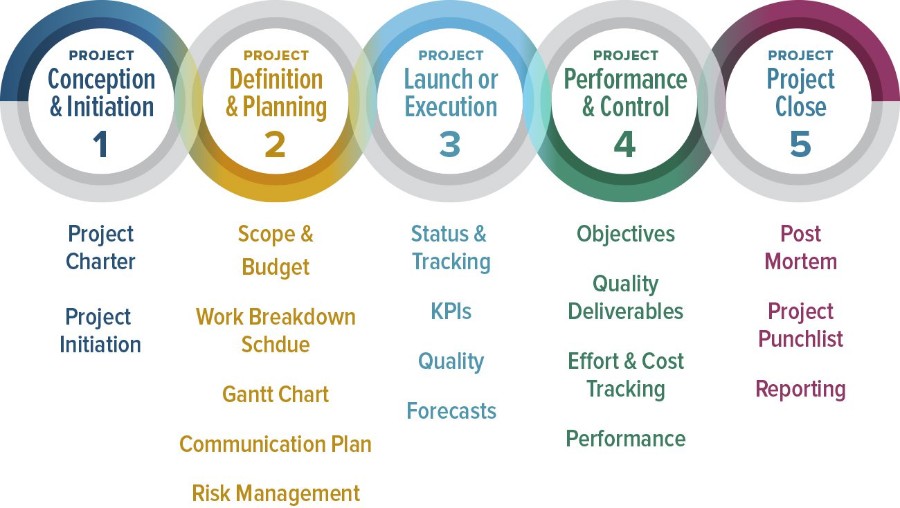
Project Management Institute is an NGO association and a project management certification. PMBOK derives from PMI, but it is not a methodology as you know it, but more like a set of standards that projects must follow. Basically, PMI/PMBOK is a detailed guide on how to run a project to obtain a successful outcome.
PMBOK is short from Project Management Body of Knowledge. The set of rules contains the exact guidelines that need to be followed in terms of project management. PMBOK contains a series of five processes that can be applied to any project. The list below:
Initiate: this process defines the starting point of a project
Plan: this process defines the project’s objectives and the approaches that will be followed to meet them
Execute: this process refers to implementing the work that was previously defined
Monitor and control: tracking and correcting any mistakes in the progress of the project
Close: concluding the activities and formally closing the project
PMBOK also mentions all the practices that should be respected when going through the five phases, as well as the conventions and techniques that are recommended as a standard option.
Who should choose this methodology?
PMI/PMBOK is a set of guidelines rather than a methodology that can be directly implemented, so it can be used to determine what the best practices to run a project are. It can be used by any type of organization to align requirements and approaches.
Lean

Lean is a methodology that can be applied in order to maximize customer value. The waste and errors are going to be reduced to a minimum.
Creating value for the customer while using a lot fewer resources seems to be an ideal approach.
Lean was inspired by the Japanese manufacturing industry, where people needed to do more, using less. The eliminated waste can be separated into three subcategories: Muda, Mura and Muri, each described below.
Muda
Muda refers to the processes that don’t add any value to the project. It can range from physical waste to resource waste. The basic waste types are transportation, inventory, motion, waiting, overproduction, over-processing, and defects. These are the most common wasting activities that organizations stumble upon.
Mura
Mura refers to waste at an operation level. The purpose of getting rid of Mura waste is to help the processes flow as they should. It eliminates any processes that bring delay into the workflow. Mura involves rescheduling so that the resource of time is not wasted.
Muri
Muri has to do with overload and delays. When adding unnecessary stages and tasks to the project, you will encounter delays. Eliminating muri leads to better working times and greater productivity.
The five principles of Lean are specifying customer value, identifying the steps present in the value stream, transforming product flow in a continuous one, pulling value from upstream activities and removing all waste.
Who should choose this methodology?
Lean is great for companies that only desire to apply a set of principles to their project management. Disorganized companies that want to transform how they conduct their workflow are the best candidates for Lean.
Extreme Programming (XP)
Extreme Programming is inspired from Agile and it has the same goals – improving the quality of software while maintaining it as simple and clean as possible, while adapting to changes and requirements. It is very similar to the original Agile, using the same working formula, iterations and collaboration methods. The only difference is that changes don’t alter the tasks as much as in other methodologies.
Because the shorter cycles of XP, the task structure is quite rigid. Compared to Agile, XP must follow a stricter priority order for the tasks. XP also involves engineering practices such as TDD. Before applying an Extreme Programming methodology, organizations should adopt Scrum first to see if XP would be suitable for their protocols.
Rapid Applications Development (RAD)
RAD is one of the preferred choices in terms of software development. Rapid Applications Development allow a flowy project management process because of the structured techniques it uses. RAD is subjectively adapting to the needs of the user and creates prototypes that repeat in time to optimize all the processes involved in development.
The greatest benefit of RAD is that it encourages very rapid development, by focusing on the customer’s demands and on the user’s needs. RAD gathers the data from a certain group of people previously selected to learn the patterns and provide users with the exact tools they need while promising the desirable outcome for the clients.
RAD is great for deep, rapid development in short-term projects that are not based on team interaction. Because it can handle very complex functions and it molds on the needs of both the client and the user, RAD is great for rapid project management and development.
Packaged Enabled Reengineering (PER)
PER is great for companies that want to rethink the whole strategy they have been using in the past. PER can help change all the outdated organizational habits in a team and fill in the gaps with new, updated habits.
What is great about PER management is that it encourages growth in organizations, while sticking to a list of previously set goals. Even though the processes are modified, the path of the organization stays the same. The corporate culture, on the other hand, is modified. This way, the team can get rid of the old methods of managing things and welcome new habits into the way they tackle tasks.
Outcome Mapping
Outcome Mapping was developed by the IDRC and is a project management methodology that is selected by most charitable organizations out there.
Charitable organizations usually organize donations, which must be carefully analyzed, bundled, and centralized. Outcome Mapping helps charity organizations manage these donations through efficient design and record-keeping phases. Outcome Mapping is mostly used in the philanthropy sector.
How to choose the right methodology?
Evaluating the project requirements
To choose the right methodology for your project, you must know how the outcome should look like. Gathering the requirements of the project will determine what methodology is the most suitable for managing it. If you already know everything about your project, opt for a structured methodology, like Waterfall.
If you are uncertain about what’s going to happen, choose an iterative one, like Agile. Check out the project budget, timeline, complexity, and the organization’s industry whenever you choose a project management methodology.
Evaluating the teams
The right project management methodology will dictate what your team members will do and when. This will affect the project’s outcome, so you need to choose carefully. Your team should be aware of the methodology you select. This way, they can adapt to the requirements and principles of that methodology. If the methodology is entirely alien for your team members, you may encounter some delays.
Always discuss with your team before choosing an approach. The team’s experience, training level, and skills are a few of the factors that affect what methodology you need to choose. For an experienced team, go for SCRUM. For a less experienced one that doesn’t know how to handle resources, choose CCPM.
Evaluating the company
The past records of your organization can affect project management. If the company used to work with a certain methodology in the past and it seemed effective, you may want to opt for the same one. The size of the company matters too.
Larger companies need to work with methodologies that are applicable to established hierarchies, while smaller ones should opt for flexible methodologies. If Agile failed in the past for your organization, choose something else this time.
Evaluating the customers
The factors related to stakeholders that affect project management are the degree of involvement and the pre-set requirements. When customers are deeply involved in each stage of the process, choose Agile.
When customers are not available at all times to provide feedback, choose methodologies that are not affected by the level of customer involvement. As for the requirements, discuss the project’s scope and choose the methodology that adapts to this scope the best.
Evaluating the tools
Start by creating a list of all the software tools in the organization. After that, analyze the benefits and downsides of each tool. Compare the capabilities of the tools and see if they are designed to work with the methodology you have in mind.
Working with your existing toolset and finding a methodology that suits it is a cost-effective choice, but investing in new tools and in training for your teams remains a valid option if you need to meet certain requirements.
FAQs about project management methodologies
1. What is a project management methodology, and why is it important?
A project management methodology is a structure that outlines the procedures, equipment, and methods needed to organize, carry out, and keep track of a project. It is crucial because it aids in resource management, risk mitigation, and effective project completion.
2. How do project management methodologies differ from one another, and which one is best for a particular project?
Approach, focus, and scope are different between project management approaches. As an illustration, certain techniques, such as Waterfall, are better suited for projects with well-defined needs and a linear project lifecycle, while others, such as Agile, are better suited for projects with changing requirements and a more iterative approach.
3. What are the benefits of using a project management methodology, and how do these benefits translate into improved project outcomes?
Improved project outcomes, enhanced efficiency, better risk management, improved communication, and increased cooperation are all advantages of employing a project management technique. Project teams may collaborate more successfully, anticipate and reduce risks, and deliver projects that meet stakeholder expectations by adopting a disciplined and consistent approach.
4. What are the most popular project management methodologies, and how do they compare to one another in terms of approach, implementation, and results?
Waterfall, Agile, Scrum, PRINCE2, and PMBOK are some of the most widely used project management approaches. The choice of methodology is influenced by variables including project size, complexity, and scope, each of which has pros and limitations.
5. How do project management methodologies address risk management and change management, and what are some best practices for managing these aspects of a project?
Using particular procedures and methods, project management methodologies address risk management and change management. While Agile approaches embrace change management through ongoing feedback loops and iteration, PRINCE2 has a specialized risk management process that involves identifying, assessing, and mitigating risks throughout the project lifecycle.
6. How do project management methodologies help with team collaboration and communication, and what are some strategies for ensuring effective collaboration and communication within a project team?
With frequent meetings, status reports, and progress updates, project management approaches foster team cooperation and communication. Building good relationships with team members and stakeholders should be a project manager’s top priority because they are essential to effective communication and collaboration.
7. What are some common challenges in implementing project management methodologies, and how can these challenges be overcome?
Implementing project management approaches frequently faces obstacles such as reluctance to change, a lack of team member buy-in, and issues tailoring the methodology to the project context. Project managers should include team members in the planning and implementation process, offer assistance and training, and be adaptable in changing the approach to the project’s objectives in order to overcome these obstacles.
8. How can project managers ensure that a project management methodology is being followed consistently and effectively throughout the project lifecycle?
By defining clear roles and duties, offering assistance and training, and keeping an eye on progress throughout the project’s lifetime, project managers may guarantee that a project management approach is applied consistently and successfully. Additionally, routine audits and reviews can assist pinpoint areas that need improvement and guarantee that the technique is being followed.
9. What role do project management tools and software play in implementing a project management methodology, and how can these tools be used to improve project outcomes?
By offering a centralized platform for project planning, tracking, and reporting, project management tools and software can aid in the implementation of a project management approach. These tools include Trello, Asana, and Microsoft Project, as examples. Project teams can benefit from using these technologies to work more productively, cooperate more successfully, and produce better results.
10. How do project management methodologies incorporate agile principles, and what are some best practices for implementing agile methodologies in a project context?
Agile principles are incorporated into project management approaches by putting a focus on flexibility, iteration, and continuous improvement. It is recommended to involve stakeholders in the process, divide the work into manageable chunks, and give frequent feedback and cooperation as top priority while applying agile approaches. Agile approaches can assist project teams in adjusting to changing needs and producing successful results in a business environment that is changing quickly.
Ending thoughts on project management technologies
Picking the right methodology will influence how your project will turn out to be. By following the aforementioned steps in choosing the right project management methodology, you can’t fail. All project managers should analyze the ups and downs of each methodology before making a choice.
If you enjoyed reading this article on project management methodologies, you should check out this one about project management framework.
We also wrote about a few related subjects like project management skills, gap analysis, Kanban app, what is a war room, project management books, project management principles, project management goals, project management metrics and IT project manager.
- What Is a War Room and How to Use it in Project Management - April 23, 2024
- Business model innovation: What it is and why it matters - April 20, 2024
- What Is A Risk Assessment Matrix And How To Use It - April 8, 2024

